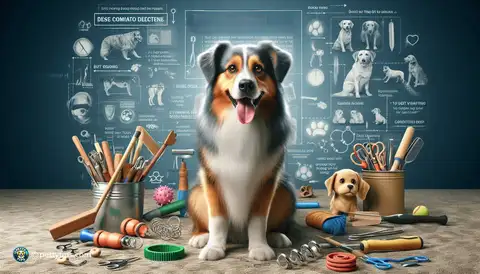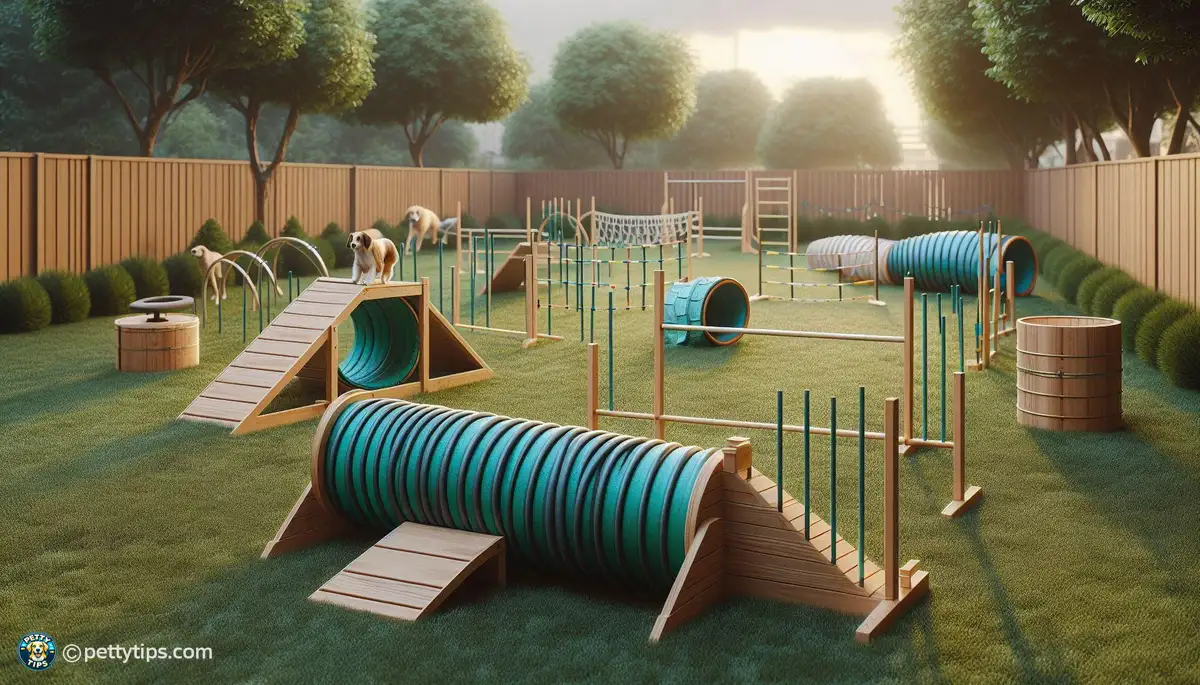
Training Techniques for Curbing Excessive Digging Behavior in Dogs
Earl Bolt - Aug 30, 2024 - 7 min read


When setting out to create an agility course at home, the first step is to evaluate the space you have available. Whether you're working with a spacious backyard or a smaller indoor area, understanding your limitations will help you design a course that suits your pet's needs. Consider factors such as terrain, obstacles, and any potential hazards that may need to be addressed.
Before you start gathering materials and building obstacles, it's essential to establish clear goals and objectives for your agility course. Are you looking to provide your pet with mental stimulation, physical exercise, or both? Determining your goals will guide your decision-making process as you design and construct the course.
Once you have a clear idea of your goals and objectives, it's time to create a blueprint for your agility course. This can be as simple as sketching out a rough layout on paper or using digital design tools to map out the course. Consider factors such as the flow of the course, the placement of obstacles, and any specific challenges you want to incorporate.
Selecting the right obstacles is crucial to the success of your agility course. Depending on your pet's size, breed, and skill level, you may need to tailor the obstacles to suit their abilities. Common obstacles include jumps, tunnels, weave poles, and agility tunnels. Be sure to choose obstacles that are safe and appropriate for your pet's size and fitness level.
Building your own agility course obstacles can be a fun and rewarding project. There are plenty of DIY options to choose from, using materials that are easy to find and affordable. From PVC pipes and pool noodles to old tires and wooden pallets, the possibilities are endless. Get creative and experiment with different materials to create obstacles that challenge and engage your pet.
When building agility course obstacles, safety should always be a top priority. Make sure that all materials are sturdy and secure, and avoid using anything that could potentially harm your pet. If you're unsure about the safety of a particular obstacle, consult with a professional or consider purchasing pre-made equipment designed specifically for agility training.
Introducing your pet to agility training should be done gradually, starting with basic exercises and gradually increasing the difficulty as they become more confident and skilled. Begin by teaching them simple commands such as "sit," "stay," and "come," and gradually introduce them to each obstacle one at a time.
positive reinforcement is key to successful agility training. Use treats, praise, and affection to reward your pet for completing each obstacle successfully. This will help to build their confidence and reinforce good behavior. Be patient and consistent, and always end each training session on a positive note.
Agility training should be enjoyable for both you and your pet. Make it a fun and engaging experience by incorporating games and challenges into your routine. Experiment with different courses and obstacles, and don't be afraid to get creative with your training sessions.
Consistency is essential when it comes to agility training. Make sure to practice regularly and stick to a consistent training schedule. This will help your pet develop the skills and confidence they need to excel on the agility course.
To ensure the safety and functionality of your agility course, it's important to conduct regular inspections and maintenance. Check for any signs of wear and tear, loose bolts or screws, and any other potential hazards that may need to be addressed. Repair or replace any damaged obstacles as needed to keep the course in top condition.
Keeping your agility course clean and sanitized is essential for your pet's health and well-being. Regularly clean and disinfect all obstacles to remove dirt, debris, and germs. Pay special attention to areas that come into contact with your pet's paws or mouth, and use pet-safe cleaning products to avoid any potential harm.
Building an agility course at home is a fantastic way to provide your pet with mental stimulation, physical exercise, and bonding opportunities. By carefully planning and designing your course, selecting the right obstacles, and incorporating positive reinforcement techniques into your training routine, you can create a fun and rewarding experience for both you and your furry friend. So roll up your sleeves, gather your materials, and get ready to unleash your pet's inner athlete!